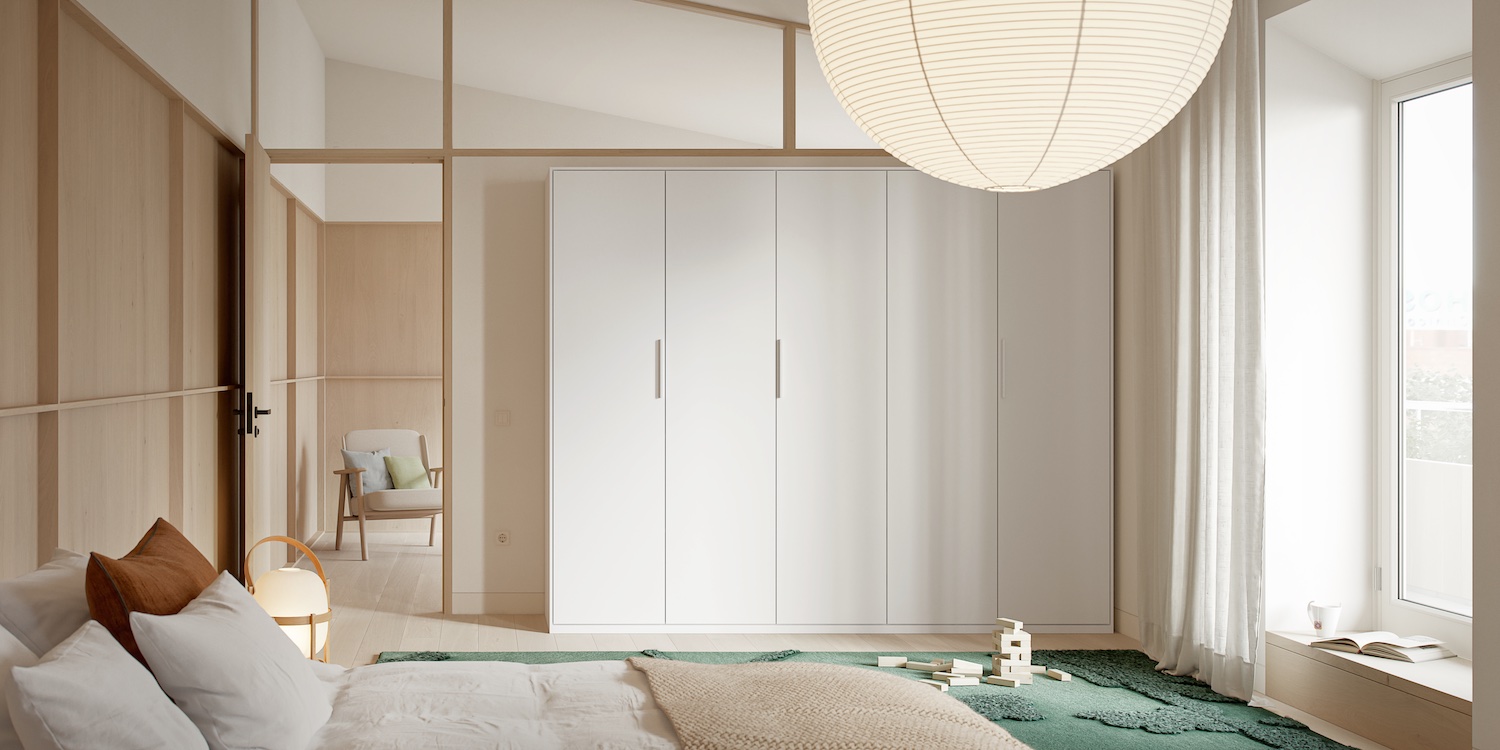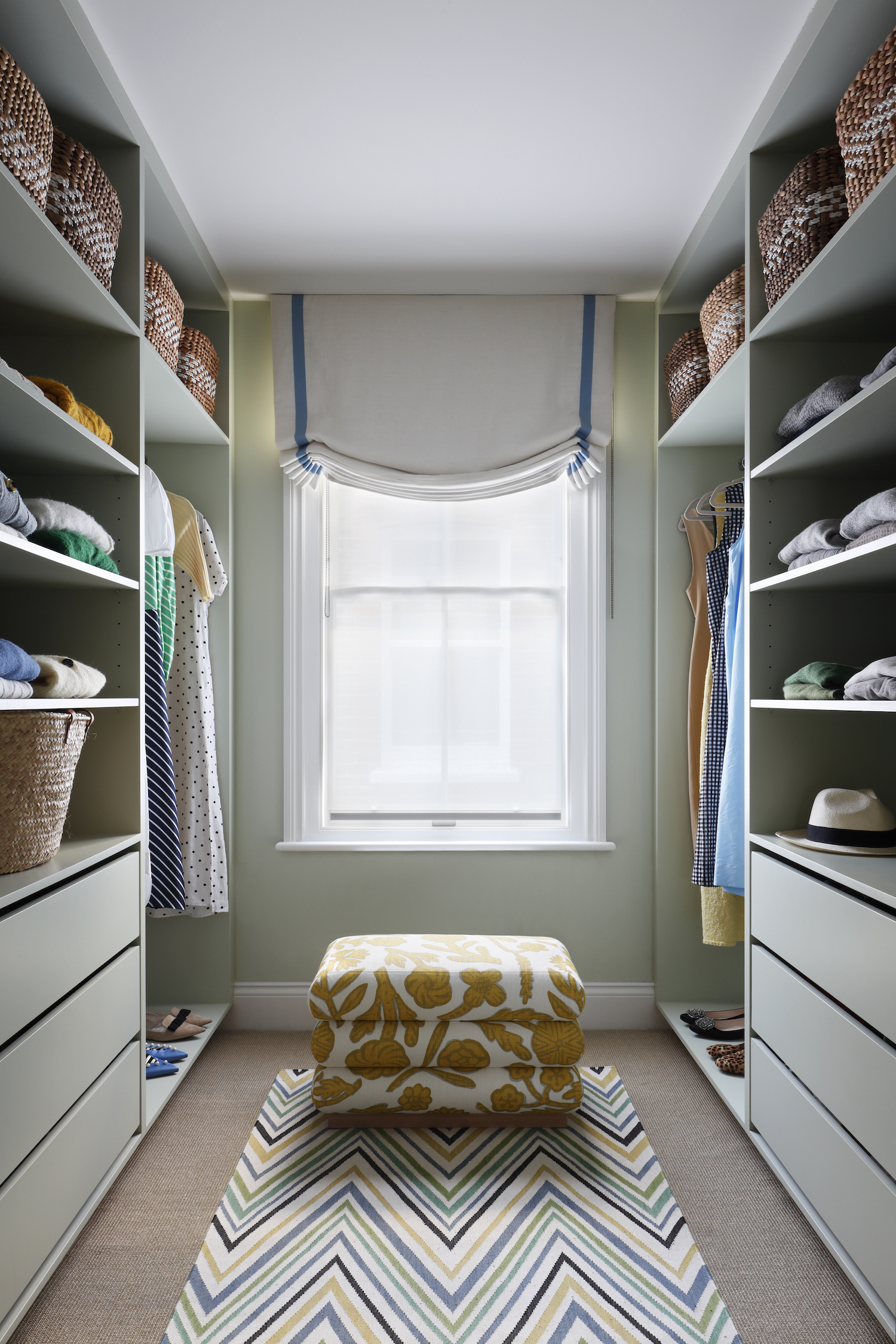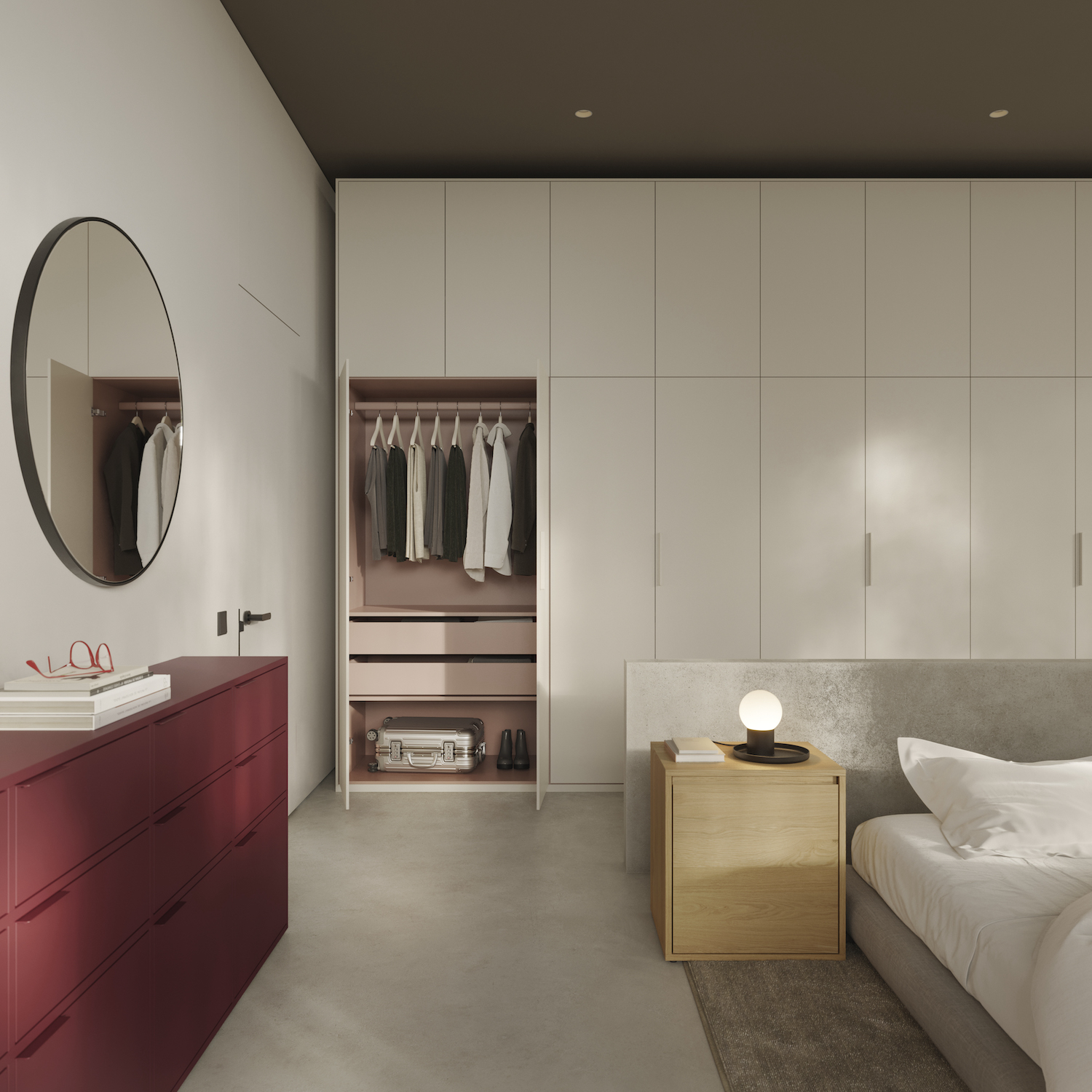How deep should a closet be? Design experts explain how to choose what's right for you
Expert advice on the most practical closet dimensions, meaning your storage works as hard it can

A good closet is the hero of a tidy home, capable of hiding unsightly objects in all shapes and sizes — from suitcases to your Christmas sweater collection.
“Functionally, good storage is essential — a beautifully designed room can be marred by a basic lack of storage — where does all your stuff go?” says Sarah Peake, interior Designer and Founder of Studio Peake. She's also a master of closet organization. “A bespoke closet can fit in with the layout of a room and also offer more storage than, say, an antique piece. But it also needs to work with the wider scheme.”
There are plenty of options out there, depending on what style and functionality is right for you. "Every closet can look different,” says Matias Gorlitz, Lead Wardrobe Designer at Tylko. “It can be compact, yet bold in design with strong colors that bring energy into the room. Or, it can be oversized and fill an entire wall while blending with the room — or anything in between.”
A closet is first and foremost a practical item. So how do you make sure you get the dimensions right?
How deep should a closet be?

“I always start with function over form,” says Sarah Peake at Studio Peake. “What are you going to put in your closet? Particularly for a bespoke piece, you can calibrate the interior as you see fit. We very often will measure clothes and shoes to ensure that everything will fit perfectly. I normally allow 23.5 inches depth for hanging, sometimes I go slightly bigger if it’s a cupboard full of lots of winter coats. For bedroom shelving in closets I normally stick to 16 inches so things don’t get lost at the back.”
Matias Gorlitz at Tylko has similar advice, even for small closets: “For comfortable storage with enough space for average use, we’d suggest a depth of 23.5 inches or above. If your space doesn’t allow for such a deep closet, a more shallow option (such as 16 inches deep) is something to consider, but it’s important to know that hanging clothes will fit differently.”
What are the other practical considerations of building a closet?

As well as measuring the items you need to keep in your bedroom storage, it’s worth thinking about how accessible they need to be. “Things that you use often should have easy and fast access, whereas things that you don’t use often can be stored away in higher parts of the closet,” says Matias Gorlitz. “The amount of long clothing to hang, or how many accessories you own can also inform how many hanging racks, drawers or shelves you may need.”
The Livingetc newsletters are your inside source for what’s shaping interiors now - and what’s next. Discover trend forecasts, smart style ideas, and curated shopping inspiration that brings design to life. Subscribe today and stay ahead of the curve.
“If you are planning to include shoe shelves, you should decide if you want these flat or angled and whether you want to have two rows of shelves,” adds Sarah Peake. “Are you sharing the space with someone much taller than you? If so, you may want to set your hanging rails at different heights.”
Of course, thinking carefully about how your closet will fit with the rest of the room is also key. “A small closet can impact a space just as much as an oversized one,” says Matias Gorlitz. “Each closet has to look good from every angle, and have enough space to work properly (with enough room to fully open doors and drawers, not catch light fixtures, etc). So it’s important to measure how much space you have, especially if you have a specific niche or place for the closet in mind.”
3 tips for choosing the right style of closet

As a closet or built-in wardrobe is usually a large part of any room, it is important to get it right. “It will have such a big impact on the room overall,” says Sarah Peake. “But there is so much opportunity to have fun with the design and you can use it as a helpful ‘anchor’ for the rest of the scheme.”
1. Pay attention to the details
Make sure the decorative features of a closet work with the rest of your room. “Elements such as a frame, visible hinges and details such as flutings and cornices can immediately make a closet feel more traditional, whereas elements such as lay on doors and recessed plinths can make something much more contemporary,” says Sarah Peake. “Designing the closet at the same time as choosing your furniture and fabrics will help make sure it all works together.”
2. Consider a universal style
When in doubt, a modern closet can be a safe choice, as it is easier to blend with other styles. “Modern style is actually quite universal — it suits almost every character of interior,” says Matias Gorlitz. “Simplicity and modernity is definitely something that people appreciate the most. We’re seeing a lot of people leaning towards soft neutrals that blend into their spaces, or going the opposite way with a bold statement closet.”
3. Go for a seamless shade
If your closet takes up a large proportion of your room, painting it the same shade as the walls will make it less domineering. “We find in smaller rooms a more seamless design is popular so as not to disrupt the eye,” says Sarah Peake. “In the V-grooved closet pictured above, the design allowed for a large amount of storage in a small space. By painting the closet the same color as the walls, we prevented it from feeling like an overbearing piece of furniture.”
Kate Hollowood is a freelance journalist who writes about a range of topics for Marie Claire UK, from current affairs to features on health, careers and relationships. She is a regular contributor to Livingetc, specializing in reporting on American designers and global interiors trends. Based in London, Kate has also written for titles like the i paper, Refinery29, Cosmopolitan and It’s Nice That.